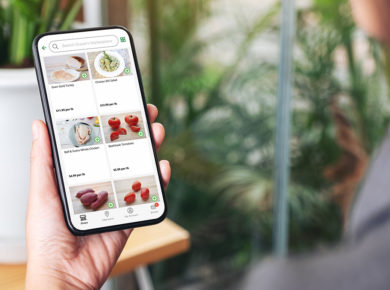Running a business can be stressful. Between managing sales, employees and point of sale, successful inventory management sometimes lags behind on the priority list. However, food store managers should pay attention to whether or not they’re managing inventory properly. This post provides some tips and best practices if you’re struggling with inventory management. Here’s how to use a POS system to, track inventory, and stay up-to-date.
Importance of Efficient Inventory Tracking
Tracking your inventory will help you to stay on top of what you have in stock to fulfill customer orders and determine what products are selling (or not moving and taking up valuable shelf-space). It is also helpful to see what products are profitable and which are not – whether by volume or price.
Tracking inventory and collecting this data in a way that you will be able to interpret will also help guide decisions about the timing of inventory purchases. A robust inventory management system will help you better identify pricing trends and seasonal shifts in the popularity of certain items – so you know when the best time is to buy goods and produce. As a store that specializes in produce or in specialty foods knowing when to order items is vital. Being on top of your inventory is crucial. SoftwareAdvice reported that 83 percent of customers will stop shopping if particular items they are looking for are out of stock.

SuperMarket news spoke to Fangruo Chan, a Supply Chain Management professor, at Columbia Business School and he referred to Whole Foods tactics of inventory management as “vendor-managed inventory” and initially what that means is that as a food retailer it is important to not keep too much inventory on hand. This includes taking into consideration shelf life and not keeping foods that will spoil quickly in inventory but, it also takes into consideration the demand and trending foods that sell out quickly.
Ordering on time, making sure you don’t have too much or too little can be a tricky puzzle to solve as a small business owner but, with the implementation of technology and your knowledge of customers demand you can successfully manage your inventory.
Read more here about what to do with excess inventory.
Software for Inventory Management
With advancements in technology and software, there are many programs of various levels of complexity and cost that you can use to track your inventory.
Microsoft Excel
Using formulas like SUM, RANK, and pre-built functions like “Sort” can help you keep your inventory organized. With the Sort function, you can sort your sales from highest to lowest to see what has the lowest amount of inventory instead of having to check one by one. You can also use the sum formula to see how many items in total you need to reorder. The RANK formula is more complex but, can help you rank what items have sold the most and can update automatically once the numbers are adjusted.
Using a USB barcode scanner to track inventory
Investing in a USB barcode scanner can be extremely useful. When an item is scanned with your device it can convert that information onto an excel spreadsheet. Once converted you can use a SUMIF function in Excel to sum all of the common SKU codes to measure what’s left in the inventory.
Quickbooks
Quickbooks is a popular software with multiple useful features for small business. One of its most interesting features is its Inventory feature. FitSmallBusiness gave some tips on how to set up QuickBooks and how to use it:
How to set up QuickBooks
To properly set up QuickBooks you need to;
- Enable your “track inventory on hand” feature under the Sales tab.
- Once activated you can create a new inventory item when once you click on the “New” tab.
- When that is complete you can start including all relevant information that pertains to your item, which includes quantity, sales price, expense rate, SKU code, and many more.
Running reports on Quickbooks
When all the information is in the system and you have included multiple items, you can start running a report. This report will give you a detailed breakdown of what needs to be reordered, how much has sold and what is left in your inventory. There are different kinds of reports as well there is a physical report, inventory valuation summary and sales summary report which enables gross profits and profit margins.
How to set up a POS system
If you’re setting up a POS system for the first time in your small business here are a few pointers on how to get started given by SoftwareAdvice:
- Choosing a POS system. There are many brands like Shopify, Square, Quickbooks, and Toast which all range from low monthly payments but can range in different features. Read more about choosing the right cash register here.
- Inventory Data: After you have finally purchased and set up your POS system you will need to organize and verify your inventory. If you already have an accurate estimate of inventory this will be easy, if not you will have to count items in the back room.
- Labeling: To keep things more organized it is highly recommended to label your products with SKU codes. These codes can be scanned, stored into the system and can be used as a reference point for future purposes.
Uploading data: As a starting point, you can use Excel to upload your data and start keeping track. You could also contact your POS provider and ask them how inventory needs to be filed and how it must be formatted. Once you have stored inventory in excel sheet format – it’s easy to upload and download this data on various other platforms and software.
Advantages of POS-based inventory tracking systems
POS systems bring convenience to retail. Since POS are updated with each sale, you can track which items are selling. Some systems even offer “reorder” buttons and alerts which give you a heads up when inventory is running low with the constant updates you can don’t need to worry about inventory management.








